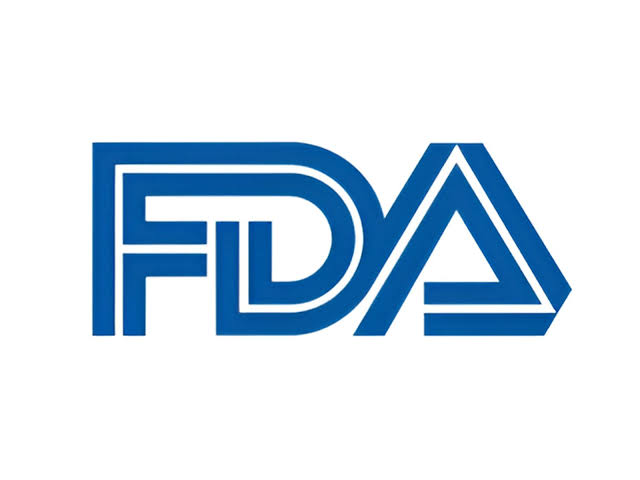When it comes to FDA inspections, success often depends on how well you understand the person conducting them. Every FDA investigator brings their own lens, priorities, and patterns to the job. That’s why more and more quality and compliance teams are moving beyond generic FDA guidance and drilling into individual inspector histories to guide their preparation.
One name that consistently comes up in life sciences and manufacturing circles is Derek Smith. Known for his thoroughness, big-picture thinking, and sharp eye for systemic gaps, Derek Smith’s inspection history offers clear, actionable signals about what the FDA is emphasizing and what your team should shore up today.
Here’s what his record reveals, why it matters, and how you can turn his findings into smarter, stronger compliance strategies.
Why Look at Individual Inspectors?
FDA investigators aren’t interchangeable. While agency priorities guide their work, each inspector tends to emphasize certain areas, whether that’s documentation, employee training, or data integrity.
Tracking these individual patterns helps companies turn inspections from unpredictable to manageable. The Derek Smith FDA record, in particular, stands out because it reflects not just current FDA focus areas but also a consistent, systemic approach that often uncovers deeper compliance gaps many companies overlook.
Who is Derek Smith? A Snapshot
Derek Smith is a seasoned FDA Regulatory Investigator who has audited a wide spectrum of pharmaceutical, biotech, and medical device facilities across the United States and internationally, including Canada, India, and Europe.
His reputation is built on depth and thoroughness. Unlike some inspectors who zero in on surface-level issues, Smith has a strong track record of connecting individual findings back to systemic weaknesses in quality systems. That approach has made his inspections both demanding and informative for the facilities he visits.
Here’s a snapshot of his record:
- Inspections conducted: 1
- Form 483s issued: 1
- Warning letters issued: 0
- Facility types: Primarily pharmaceutical and sterile manufacturing, with some biologics
Smith’s focus on systemic compliance, rather than isolated errors, makes his findings a valuable indicator of broader FDA expectations.
What Derek Smith’s Inspection Data Shows
Looking at Derek Smith’s inspections over 2023–2024, several consistent themes emerge:
- Data integrity lapses: Missing or incomplete audit trails, unvalidated electronic systems, unauthorized data changes, and insufficient controls around electronic records.
- Cleaning and contamination control: Gaps in aseptic technique, inadequate cleaning validation, poor environmental monitoring, and lack of trending in contamination data.
- Supplier oversight: Inadequate qualification of CMOs, insufficient monitoring of overseas contractors, and over-reliance on vendor certificates without verification.
- Validation gaps: Missing or poorly documented process validation studies, inconsistent risk assessments, and incomplete change control.
What sets Smith apart from some of his peers is how he connects findings together. For example, he may identify cleaning failures and link them back to weak training programs or flawed CAPA processes, painting a more comprehensive picture of systemic risk. For facilities still relying on patchwork fixes and outdated SOPs, this kind of inspection can be a wake-up call.
Warning Letters Linked to Derek Smith’s Findings
Derek Smith’s inspections often result in Form 483 observations, identifying areas that require correction. Only a small number escalate to Warning Letters, usually when companies delay or fail to implement adequate corrective actions.
Common findings include:
- Failure to address environmental monitoring excursions identified in earlier inspections
- SOPs revised but not implemented or followed consistently
- Inadequate cleaning validation despite prior citations
- Continuing data integrity concerns despite CAPA commitments
One notable case in 2023 involved a sterile drug manufacturer that received a Form 483 from Smith outlining contamination control issues. The company delayed corrective action and failed to conduct a meaningful root cause analysis. Months later, the site received a Warning Letter detailing the same lapses, this time accompanied by stronger FDA language and public notice.
Takeaway: Treat Form 483s seriously. Prompt, documented corrective action can prevent escalation and demonstrate a commitment to compliance.
Lessons for Compliance Teams
Smith’s inspection history offers more than statistics; it’s a roadmap for strengthening your own operations. Here’s what you can do:
- Audit like an inspector: Don’t just check boxes. Challenge your own systems as if an FDA investigator is arriving tomorrow.
- Train continuously: Compliance isn’t static. Ensure your team understands evolving standards and their role in maintaining them.
- Respond decisively: Treat internal audit findings with the same urgency as external ones, and back corrective actions with thorough CAPA documentation.
- Standardize globally: If you operate multiple sites, ensure consistent practices across all locations, regardless of geography or local customs.
- Trend your data: Spotting patterns in your own monitoring data, the same way inspectors do, can help you fix problems before they’re cited.
These are foundational practices, but Smith’s inspection record shows that too many companies fall short of executing them well.
What Derek Smith’s Record Tells Us About FDA Priorities
It’s worth noting that Smith’s findings aren’t just a reflection of his personal style. They’re aligned with where the FDA as an agency is putting its enforcement muscle today. His inspections mirror current FDA priorities, including:
- Strengthening GMP standards for advanced therapies like cell and gene products
- Elevating supplier and contractor oversight, especially overseas
- Reinforcing ALCOA+ principles for data integrity and electronic recordkeeping
- Ensuring contamination control in sterile and high-risk environments
By addressing these areas proactively, you’ll be better prepared for inspections from any FDA investigator, not just Derek Smith.
Key Takeaways
To recap:
- Individual inspector trends offer actionable insight into FDA expectations.
- The Derek Smith FDA inspection record highlights key risk areas — data integrity, contamination control, and supplier oversight — that align closely with current agency priorities.
- Facilities that act early and decisively on 483s reduce the risk of escalation.
- Intelligence tools like Atlas Compliance can help you monitor trends, benchmark performance, and predict risks.
By staying ahead of inspectors rather than reacting to them, you build a stronger, more resilient compliance culture.
Conclusion
Every inspector’s record tells a story. Derek Smith’s inspections highlight what matters most to the FDA right now and what unprepared companies often miss.
By studying his trends, addressing systemic gaps, and leveraging regulatory intelligence, you can shift from scrambling to strategic, turning inspections into opportunities to demonstrate quality, not just survive scrutiny.
See how Atlas Compliance can help you track inspector trends, benchmark your site’s performance, and strengthen your compliance strategy!
Derek Smith FDA: Inspection Trends, Warning Letters, and Key Takeaways
When it comes to FDA inspections, success often depends on how well you understand the person conducting them. Every FDA investigator brings their own lens, priorities, and patterns to the job. That’s why more and more quality and compliance teams are moving beyond generic FDA guidance and drilling into individual inspector histories to guide their preparation.
One name that consistently comes up in life sciences and manufacturing circles is Derek Smith. Known for his thoroughness, big-picture thinking, and sharp eye for systemic gaps, Derek Smith’s inspection history offers clear, actionable signals about what the FDA is emphasizing and what your team should shore up today.
Here’s what his record reveals, why it matters, and how you can turn his findings into smarter, stronger compliance strategies.
Why Look at Individual Inspectors?
FDA investigators aren’t interchangeable. While agency priorities guide their work, each inspector tends to emphasize certain areas, whether that’s documentation, employee training, or data integrity.
Tracking these individual patterns helps companies turn inspections from unpredictable to manageable. The Derek Smith FDA record, in particular, stands out because it reflects not just current FDA focus areas but also a consistent, systemic approach that often uncovers deeper compliance gaps many companies overlook.
Who is Derek Smith? A Snapshot
Derek Smith is a seasoned FDA Regulatory Investigator who has audited a wide spectrum of pharmaceutical, biotech, and medical device facilities across the United States and internationally, including Canada, India, and Europe.
His reputation is built on depth and thoroughness. Unlike some inspectors who zero in on surface-level issues, Smith has a strong track record of connecting individual findings back to systemic weaknesses in quality systems. That approach has made his inspections both demanding and informative for the facilities he visits.
Here’s a snapshot of his record:
- Inspections conducted: 1
- Form 483s issued: 1
- Warning letters issued: 0
- Facility types: Primarily pharmaceutical and sterile manufacturing, with some biologics
Smith’s focus on systemic compliance, rather than isolated errors, makes his findings a valuable indicator of broader FDA expectations.
What Derek Smith’s Inspection Data Shows
Looking at Derek Smith’s inspections over 2023–2024, several consistent themes emerge:
- Data integrity lapses: Missing or incomplete audit trails, unvalidated electronic systems, unauthorized data changes, and insufficient controls around electronic records.
- Cleaning and contamination control: Gaps in aseptic technique, inadequate cleaning validation, poor environmental monitoring, and lack of trending in contamination data.
- Supplier oversight: Inadequate qualification of CMOs, insufficient monitoring of overseas contractors, and over-reliance on vendor certificates without verification.
- Validation gaps: Missing or poorly documented process validation studies, inconsistent risk assessments, and incomplete change control.
What sets Smith apart from some of his peers is how he connects findings together. For example, he may identify cleaning failures and link them back to weak training programs or flawed CAPA processes, painting a more comprehensive picture of systemic risk. For facilities still relying on patchwork fixes and outdated SOPs, this kind of inspection can be a wake-up call.
Warning Letters Linked to Derek Smith’s Findings
Derek Smith’s inspections often result in Form 483 observations, identifying areas that require correction. Only a small number escalate to Warning Letters, usually when companies delay or fail to implement adequate corrective actions.
Common findings include:
- Failure to address environmental monitoring excursions identified in earlier inspections
- SOPs revised but not implemented or followed consistently
- Inadequate cleaning validation despite prior citations
- Continuing data integrity concerns despite CAPA commitments
One notable case in 2023 involved a sterile drug manufacturer that received a Form 483 from Smith outlining contamination control issues. The company delayed corrective action and failed to conduct a meaningful root cause analysis. Months later, the site received a Warning Letter detailing the same lapses, this time accompanied by stronger FDA language and public notice.
Takeaway: Treat Form 483s seriously. Prompt, documented corrective action can prevent escalation and demonstrate a commitment to compliance.
Lessons for Compliance Teams
Smith’s inspection history offers more than statistics; it’s a roadmap for strengthening your own operations. Here’s what you can do:
- Audit like an inspector: Don’t just check boxes. Challenge your own systems as if an FDA investigator is arriving tomorrow.
- Train continuously: Compliance isn’t static. Ensure your team understands evolving standards and their role in maintaining them.
- Respond decisively: Treat internal audit findings with the same urgency as external ones, and back corrective actions with thorough CAPA documentation.
- Standardize globally: If you operate multiple sites, ensure consistent practices across all locations, regardless of geography or local customs.
- Trend your data: Spotting patterns in your own monitoring data, the same way inspectors do, can help you fix problems before they’re cited.
These are foundational practices, but Smith’s inspection record shows that too many companies fall short of executing them well.
What Derek Smith’s Record Tells Us About FDA Priorities
It’s worth noting that Smith’s findings aren’t just a reflection of his personal style. They’re aligned with where the FDA as an agency is putting its enforcement muscle today. His inspections mirror current FDA priorities, including:
- Strengthening GMP standards for advanced therapies like cell and gene products
- Elevating supplier and contractor oversight, especially overseas
- Reinforcing ALCOA+ principles for data integrity and electronic recordkeeping
- Ensuring contamination control in sterile and high-risk environments
By addressing these areas proactively, you’ll be better prepared for inspections from any FDA investigator, not just Derek Smith.
Key Takeaways
To recap:
- Individual inspector trends offer actionable insight into FDA expectations.
- The Derek Smith FDA inspection record highlights key risk areas — data integrity, contamination control, and supplier oversight — that align closely with current agency priorities.
- Facilities that act early and decisively on 483s reduce the risk of escalation.
- Intelligence tools like Atlas Compliance can help you monitor trends, benchmark performance, and predict risks.
By staying ahead of inspectors rather than reacting to them, you build a stronger, more resilient compliance culture.
Conclusion
Every inspector’s record tells a story. Derek Smith’s inspections highlight what matters most to the FDA right now and what unprepared companies often miss.
By studying his trends, addressing systemic gaps, and leveraging regulatory intelligence, you can shift from scrambling to strategic, turning inspections into opportunities to demonstrate quality, not just survive scrutiny.
See how Atlas Compliance can help you track inspector trends, benchmark your site’s performance, and strengthen your compliance strategy!































